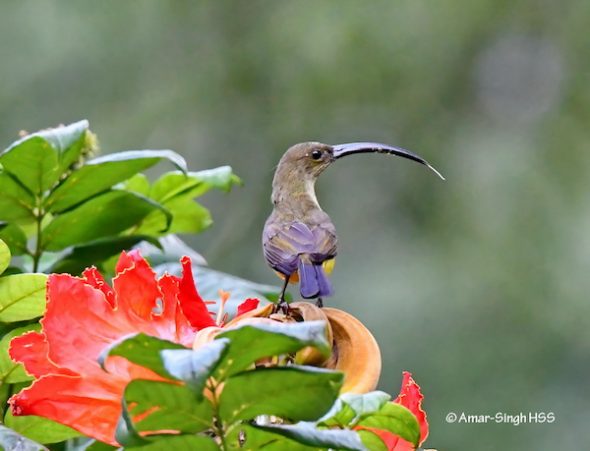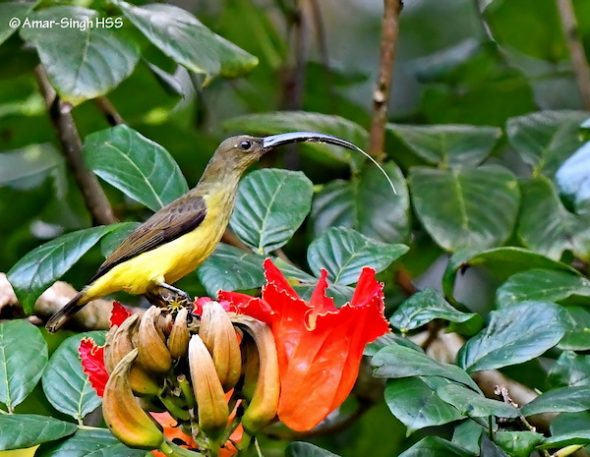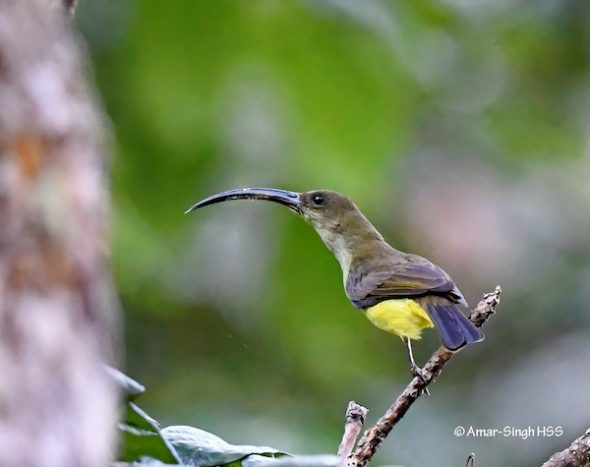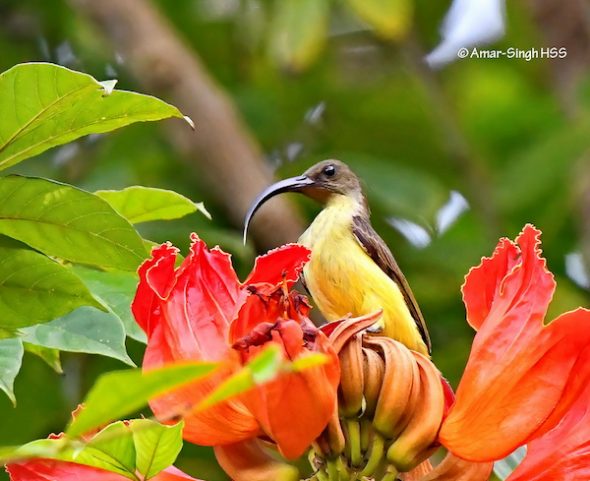
Post 1
I am grateful to a bird watching colleague who alerted us to the presence of, the less commonly seen, Long-billed Spiderhunters (Arachnothera robusta robusta) at this location, adjacent to extensive limestone outcroppings. There were 4 species of Spiderhunters feeding high up on the nectar of Spathodea campanulata (African Tulip Tree) at the site this morning:
- Long-billed Spiderhunter Arachnothera robusta robusta – 3 birds
- Grey-breasted Spiderhunter Arachnothera modesta modesta – 1 bird
- Spectacled Spiderhunter Arachnothera flavigaster – 2 birds
- Yellow-eared Spiderhunter Arachnothera chrysogenys chrysogenys – 1 bird

Post 2
I am assuming nectar feeding of the Spathodea campanulata as they all dip their heads into the large flowers. However note that literature does indicate that these flowers have some toxin in the flower/nectar that kills bees and other insects. The Spathodea campanulata is an introduced plant (exotic) that is widely grown for its bright flowers.

Post 3

Post 4
There was some competitive feeding and I noticed that the Long-billed Spiderhunter was the most timid, being chased from feeding locations by both the Grey-breasted and Spectacled Spiderhunters. The Long-billed Spiderhunter was also seen feeding on the nectar of the Bauhinia blakeana (Hong Kong Orchid Tree); another exotic plant; feeding was by fluttering to gain access to the nectar. The Long-billed Spiderhunter has a very long tongue that can protrude almost the length of the beak (see Post 2). The beak is strongly down-curved (Post 4). The tail is sooty black on the upper surface and tipped white, best seen on the ventral surface (Post 3 & Post 2).

Post 5.
Amar-Singh HSS (Dato’ Dr) – Ipoh, Perak, Malaysia
Location: Perak, Malaysia
Habitat: Secondary growth adjacent to limestone outcroppings
Date: 30th November 2020
Equipment: Nikon D500 SLR with Nikon AF-S Nikkor 500mm f/5.6E PF ED VR, handheld with Rode VideoMic Pro Plus Shotgun Microphone








